Maria Christina, Duchess of Teschen was the fifth and favorite child of Maria Theresa, the Holy Roman Empress—and her privilege in life made her the envy of her siblings.
1. She Always Got Her Way
Maria Christina, Duchess of Teschen, couldn’t help it if she was the prettiest, smartest, and most talented of her siblings. She definitely couldn’t help it if her mother, the powerful Holy Roman Empress, Maria Theresa, loved her more than them. Maria Christina always got what she wanted—including a secret lover—even as her siblings grew dangerously envious.

2. She Was Her Mother’s Birthday Gift
Perhaps one of the reasons why Maria Theresa preferred Maria Christina to her other children was that they shared a birthday. Little Maria Christina was born on her mother’s 25th birthday in May of 1742. As the fifth child in a brood of sixteen, she could easily have passed into obscurity. But she was too remarkable a little Habsburg for that.
 Martin van Meytens, Wikimedia Commons
Martin van Meytens, Wikimedia Commons
3. She Had An Intense Sibling Rivalry
From the very day that Maria Christina was born, it was obvious to everyone that she was her mother’s favorite child. Throughout her life, the Empress made little effort to conceal her favoritism for Maria Christina—and the consequences were disastrous. This discord sowed the seeds for a sixteen-way sibling rivalry that nearly tore the Habsburg Empire apart.
As it turns out, Europe wasn’t big enough for all of them.
 Martin van Meytens, Wikimedia Commons
Martin van Meytens, Wikimedia Commons
4. She Was Strong-Willed
Maria Christina’s parents, the Emperor and Empress, adored her—but had to admit she was a handful. From an early age, they noticed that she was every bit as strong-willed as her iron-bound mother. They described her personality as “capricious and spirited”. As such, they made every attempt to ensure that she received a proper education.
 Maria Christina, Duchess of Teschen, Wikimedia Commons
Maria Christina, Duchess of Teschen, Wikimedia Commons
5. She Could Throw A Tantrum
In an attempt to tame some of her more “capricious” traits, Maria Christina's parents gave her one of the best governesses in all of Europe, Princess Maria Karoline von Trautson-Falkenstein. But—being something of a wild child—Maria Christina didn’t like her and, after what we presume were some royal tantrums, convinced her parents to get her a new governess.
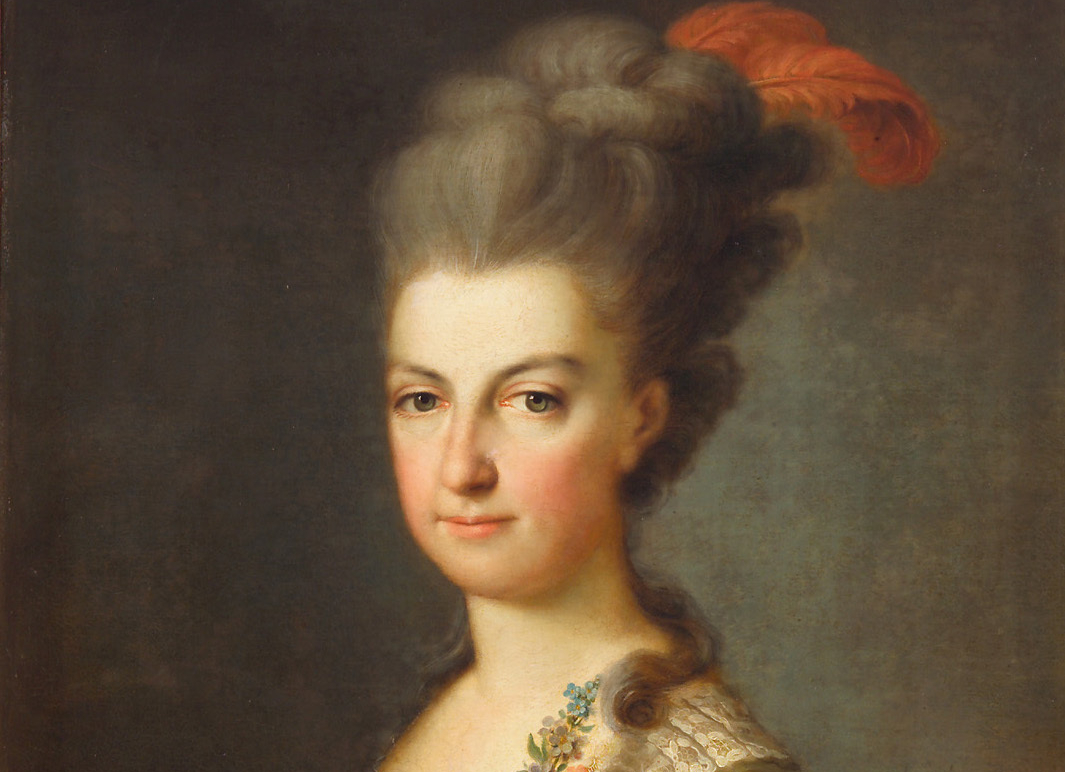 Johann Baptist von Lampi the Elder, Wikimedia Commons
Johann Baptist von Lampi the Elder, Wikimedia Commons
6. She Was Artistic
Maria Christina's new governess, Countess Maria Anna Vasquez, managed to iron out her rougher edges. Under this new tutelage she blossomed into a “beautiful and highly intelligent” young woman. But her beauty and intellect weren’t her greatest assets. She was also a very gifted artist who, in another life, might have had her paintings hanging in the Louvre.
 Martin van Meytens, Wikimedia Commons
Martin van Meytens, Wikimedia Commons
7. She Was Truly Talented
Being an archduchess, there was never any chance that Maria Christina could have pursued the life of a painter. But, her doting mother proudly indulged her passions and displayed her works in the Imperial Palace. To her credit, even before the age of 18, she had mastered the techniques of Dutch painters and produced high-quality work.
 Maria Christina, Duchess of Teschen, Wikimedia Commons
Maria Christina, Duchess of Teschen, Wikimedia Commons
8. She Spoke Many Languages
As her mother’s favorite, Maria Christina enjoyed opportunities that her sisters simply did not. For one, she received an education in languages and history from a Jesuit priest. She learned to speak perfect Italian and French (which she actually preferred) and was even fluent in English. Unfortunately, her siblings learned to curse her name in as many languages.
 Martin van Meytens, Wikimedia Commons
Martin van Meytens, Wikimedia Commons
9. Her Siblings Criticized Her
Maria Christina’s siblings resented the educational opportunities that their parents gave to her. Not to mention, they had to walk past her artwork as a constant reminder that their mother loved her more. Their reactions were understandable—if cruel. They tried to avoid her and openly criticized the favoritism that their parents showed and the power it gave her over them.
It was a power that she wouldn’t have forever.
 Unknown Author, Wikimedia Commons
Unknown Author, Wikimedia Commons

History's most fascinating stories and darkest secrets, delivered to your inbox daily.
10. Her Mother Broke Her Heart
Maria Christina was aware that her siblings didn’t like her and resented the privileges she had as the favorite child of the Empress. But being the apple of her powerful mother’s eye had other downsides. When at 17, she fell in love with Duke Louis Eugene of Württemberg, she learned just what those drawbacks were. Namely, devastating heartbreak.
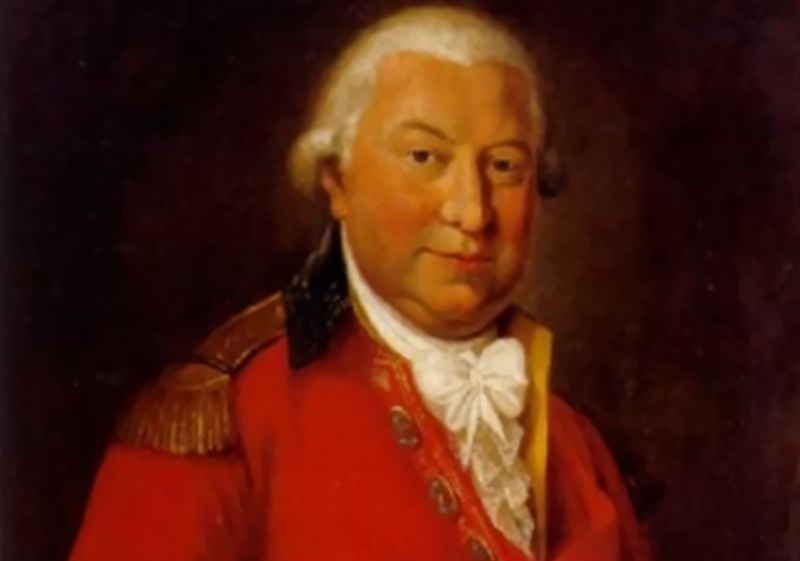 Philipp Friedrich von Hetsch, Wikimedia Commons
Philipp Friedrich von Hetsch, Wikimedia Commons
11. She Had To Marry For Power
As a member of the Imperial Habsburg family, the Emperor and Empress expected Maria Christina and all of her siblings to marry for power and position. So, when Maria Christina fell in love with a lowly duke, the Empress’s reaction was ice cold. Unsurprisingly, her mother did not think that the Duke of Württemberg was good enough for her and ended the romance.
So, she made other arrangements.
 Jean-Étienne Liotard, Wikimedia Commons
Jean-Étienne Liotard, Wikimedia Commons
12. Her Mother Found Her A Match
After breaking off Maria Christina's relationship with Duke Louis Eugene, Maria Theresa went about finding better matches for her daughter. Matches that, she believed, were more fitting for the favorite child of an Empress. She invited two princes from Saxony, Albert and Clemens, to Vienna. Sparks started flying—but not in the direction anyone had expected.
 Unknown author, Wikimedia Commons
Unknown author, Wikimedia Commons
13. Her Prince Charming Left
Once he arrived in Vienna, Prince Albert immediately fell in love with Maria Christina while watching her perform in a concert. Sadly, duty called Prince Albert back to his home of Dresden before a true romance could begin. Plus, it seemed as though Maria Christina had her eyes on someone else. It was a forbidden romance that she had to keep a secret.
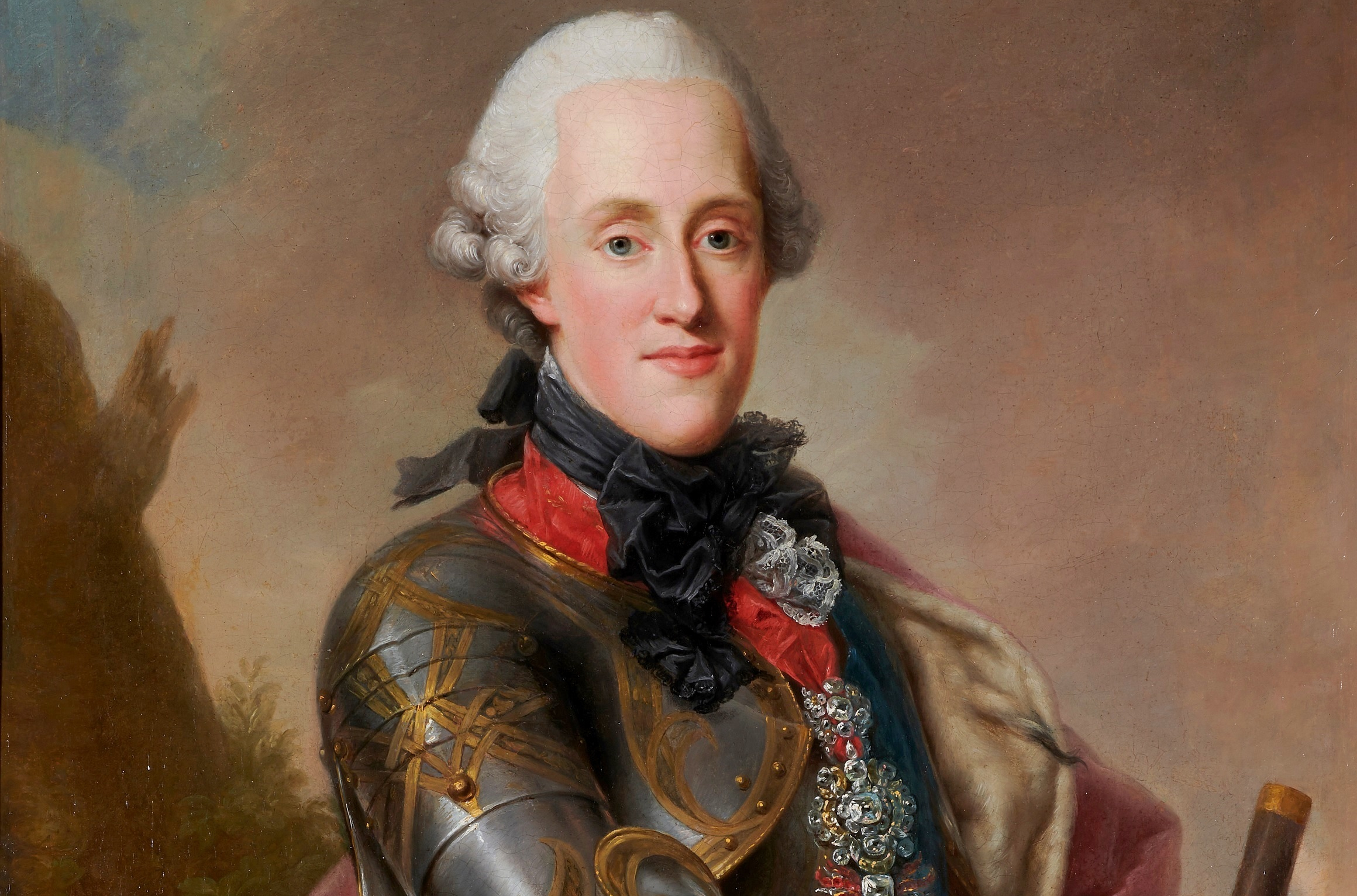 Marcello Bacciarelli, Wikimedia Commons
Marcello Bacciarelli, Wikimedia Commons
14. Her Sister-In-Law Caught Her Eye
Later that year, Maria Christina's older brother, Joseph II, married Princess Isabella of Parma. By all accounts, Isabella was “beautiful, educated, and very sensitive”. While she wasn’t crazy about marrying into the Imperial Habsburg family and was lukewarm about Joseph II, she found a good friend—and very likely a lot more—in Maria Christina.
 Jean-Marc Nattier, Wikimedia Commons
Jean-Marc Nattier, Wikimedia Commons
15. She Did Things In Secret
In the ensuing years, Maria Christina and Isabella became practically inseparable. In fact, they spent so much time together that courtiers began comparing them to Orpheus and Eurydice. Oftentimes, the two would sneak away together and find hidden corners within the Imperial Palace to…well, we’ll let you figure out what they did in secret.
 Circle of Martin van Meytens, Wikimedia Commons
Circle of Martin van Meytens, Wikimedia Commons
16. She Exchanged Love Letters
Isabella had always wanted a more passionate life, and it’s possible that Maria Christina gave it to her. There’s evidence in the more than 200 letters that Isabella wrote to Maria Christina—in the love language of French, no less—that Maria Christina and Isabella were a lot more than just best friends and sisters-in-law. They shared a deep, intimate bond.
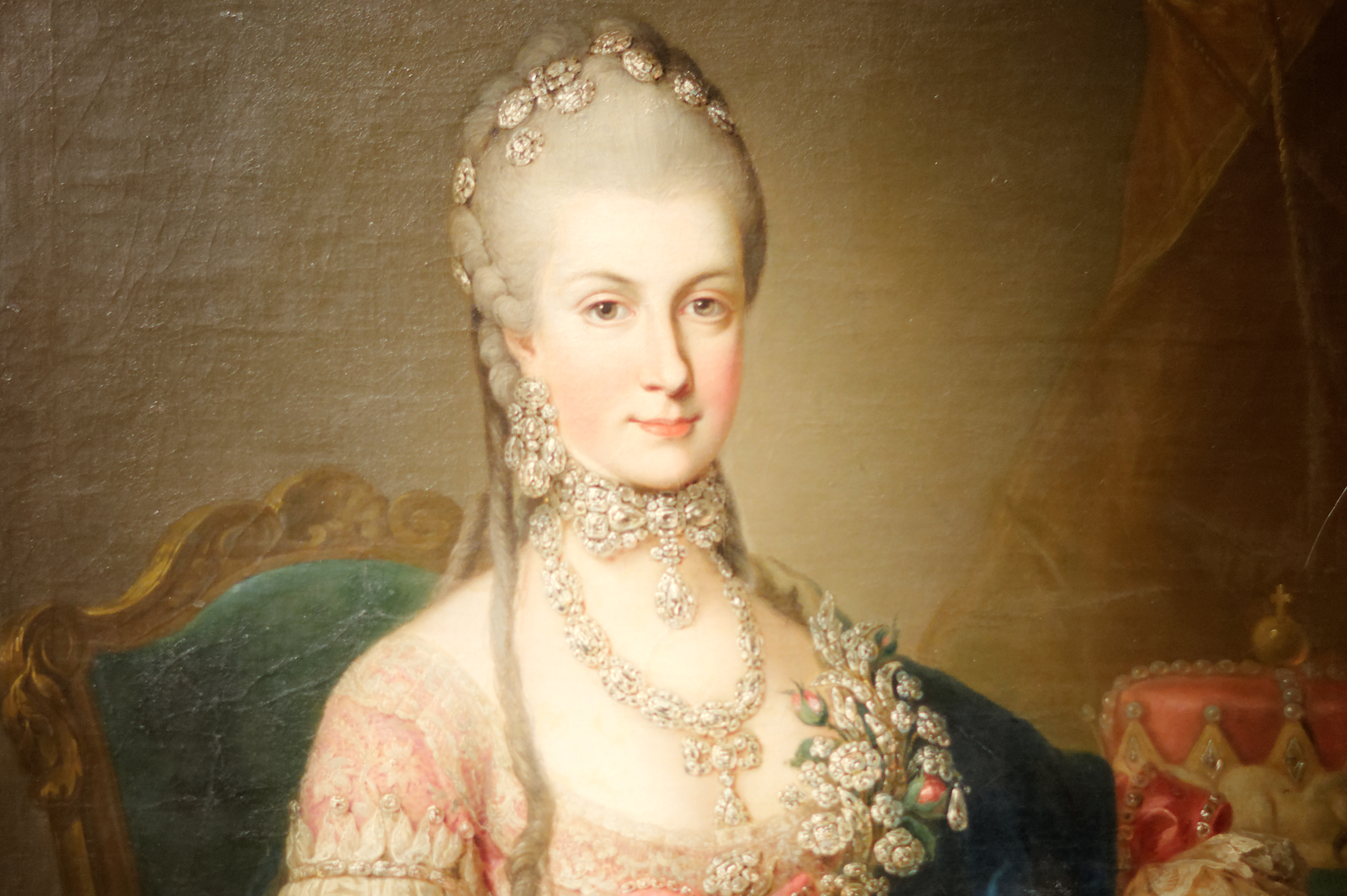 Martin van Meytens, CC BY-SA 3.0 , Wikimedia Commons
Martin van Meytens, CC BY-SA 3.0 , Wikimedia Commons
17. Her Sister-In-Law Was Obsessed
Some of the letters that Isabella wrote to Maria Christina sounded like letters between Romeo and Juliet. The somewhat melancholic (and mostly certainly bipolar) Isabella wrote that “love, that cruel god” tormented her. But the letters got even more disturbing. She even thought that eternal rest would be "surely sweet" if it didn't imply parting from Maria Christina.
 Unknown Author, Wikimedia Commons
Unknown Author, Wikimedia Commons
18. She Was Everything To Isabella
In the letters, Isabella also frequently referred to Maria Christina with affectionate language. Language that would definitely suggest they were more than just friends. She variously called her “my dear angel”, “my most precious treasure”, and “my consolation”.
 Daniel Schmidely, Wikimedia Commons
Daniel Schmidely, Wikimedia Commons
19. She Felt A Deep Shame
Both Maria Christina and Isabella knew that they were playing a dangerous game, getting so close to each other and exchanging these love letters. But the paranoid Isabella was clearly more fearful of what would happen if anyone found out and more uncertain about their romance. She wrote, “for there is nothing in the world as shameful as going against nature”.
 Unknown Author, Wikimedia Commons
Unknown Author, Wikimedia Commons
20. She Lost Her Lover
Whatever relationship Maria Christina had with Isabella ended suddenly—and very tragically. In 1763, Isabella contracted smallpox while pregnant with her second child. Sadly, both Isabella and her baby departed this life shortly after she gave birth. Poor Maria Christina was left absolutely heartbroken. Her close relationship with Isabella had only deepened the divides within her family.
 Jean-Étienne Liotard, Wikimedia Commons
Jean-Étienne Liotard, Wikimedia Commons
21. Her Prince Charming Came Back
For Maria Christina, the loss of one lover meant the arrival of another. Prince Albert returned to Vienna to express his deepest condolences to the Imperial family for Isabella’s passing—and to swoop in and save Maria Christina. As the two spent time together, Maria Christina fell head over heels for him just as her mother had hoped. There was just one problem.
 Unknown author, Wikimedia Commons
Unknown author, Wikimedia Commons
22. She Had To Pull Some Strings
Prince Albert was a far more suitable match for Maria Christina than the her teenaged romance, the Duke of Württemberg, had been. He was certainly a better match than her sister-in-law who is no longer alive. Nevertheless, they had a huge problem in front of them. Prince Albert believed that he didn’t have a high enough rank in order to seek Maria Christina’s hand in marriage and feared that her father would turn him down.
But being the favorite came with some perks.
 Unknown author, CC BY-SA 4.0 , Wikimedia Commons
Unknown author, CC BY-SA 4.0 , Wikimedia Commons
23. Her Father Didn’t Approve
Maria Christina's father, the Emperor Francis I, had already chosen a man for her. He intended for her to marry her first cousin, Prince Benedetto of Savoy, Duke of Chablais, for political reasons. However, Maria Christina appealed to her mother who, not able to deny her favorite child twice, advised her to be patient. She would arrange everything.
 Martin van Meytens, Wikimedia Commons
Martin van Meytens, Wikimedia Commons
24. She Had To Hide Her Feelings
In 1765, wedding bells were in the air. Unfortunately, they were not for Maria Christina. Instead, the Imperial family traveled to Innsbruck for her brother Leopold’s wedding. With all of the royal families in Europe gathered for the celebration, Maria Christina and Prince Albert had to keep their distance from each other. But fate brought them together.
 Anton Raphael Mengs, Wikimedia Commons
Anton Raphael Mengs, Wikimedia Commons
25. She Got Her Wish
Shortly after Leopold’s wedding, Maria Christina got the freedom she wished for—but she had to pay a devastating price for it. Her father departed suddenly and unexpectedly. With her mother on her side, Maria Christina knew that she could marry the man she loved. Even if it meant turning her siblings into bitter rivals and sparking a family feud that would see heads roll.
 Marcello Bacciarelli, Wikimedia Commons
Marcello Bacciarelli, Wikimedia Commons
26. She Moved Into Her Love Nest
Free to pursue her heart, Maria Christina and Prince Albert moved to Pressburg (modern day Bratislava) and started living in style. With the support of her mother—and the seething, blood-boiling, all-consuming envy of her siblings—she dropped a small fortune on renovations for the local castle to meet her imperial standards.
 Heinrich Füger, Wikimedia Commons
Heinrich Füger, Wikimedia Commons
27. Her Mother Showered Her With Gifts
In addition to the mountain of money that she had given Maria Christina for renovating the castle in Pressburg, Maria Theresa showered the lovebirds with other gifts. Sure, Maria appreciated the expensive furniture and tableware, but it was the titles, land grants, lordships and duchies that had her siblings seeing red and turning green with jealousy.
 Ludwig Rohbock, Wikimedia Commons
Ludwig Rohbock, Wikimedia Commons
28. Her Guests Mourned At Her Wedding
Finally, Maria Christina got what she had always wanted: A big wedding with the man she loved. The two had an extravagant wedding at Schloss Hof—but the celebrations had a dark shadow hanging over them. While Maria Christina wore a white, pearl-decorated dress, her guests all wore black in mourning for the late emperor, her father. They might also have been mourning their familial love for her.
 Elena Marie Meyer, CC BY-SA 4.0 , Wikimedia Commons
Elena Marie Meyer, CC BY-SA 4.0 , Wikimedia Commons
29. She Caused Alienation Within The Family
Quite apart from the outlandish gifts that Maria Theresa had given her daughter as part of her marriage, Maria Christina’s siblings resented her freedom. The fact that Maria Theresa had allowed Maria Christina to marry for love caused a rift in the Habsburg family with her younger sister, Maria Amalia, becoming estranged from her mother over it.
 Johann Franz Greipel, Wikimedia Commons
Johann Franz Greipel, Wikimedia Commons
30. Her Marriage Was Delightful
Regardless of what her siblings thought, Maria Christina settled into a happy marriage with the man of her dreams. She and Prince Albert corresponded frequently with the Dowager Empress, visited Vienna often, collected art and hosted massive festivals. But it wasn’t all sunshine and rainbows. Their happy marriage was about to hit a hurdle.
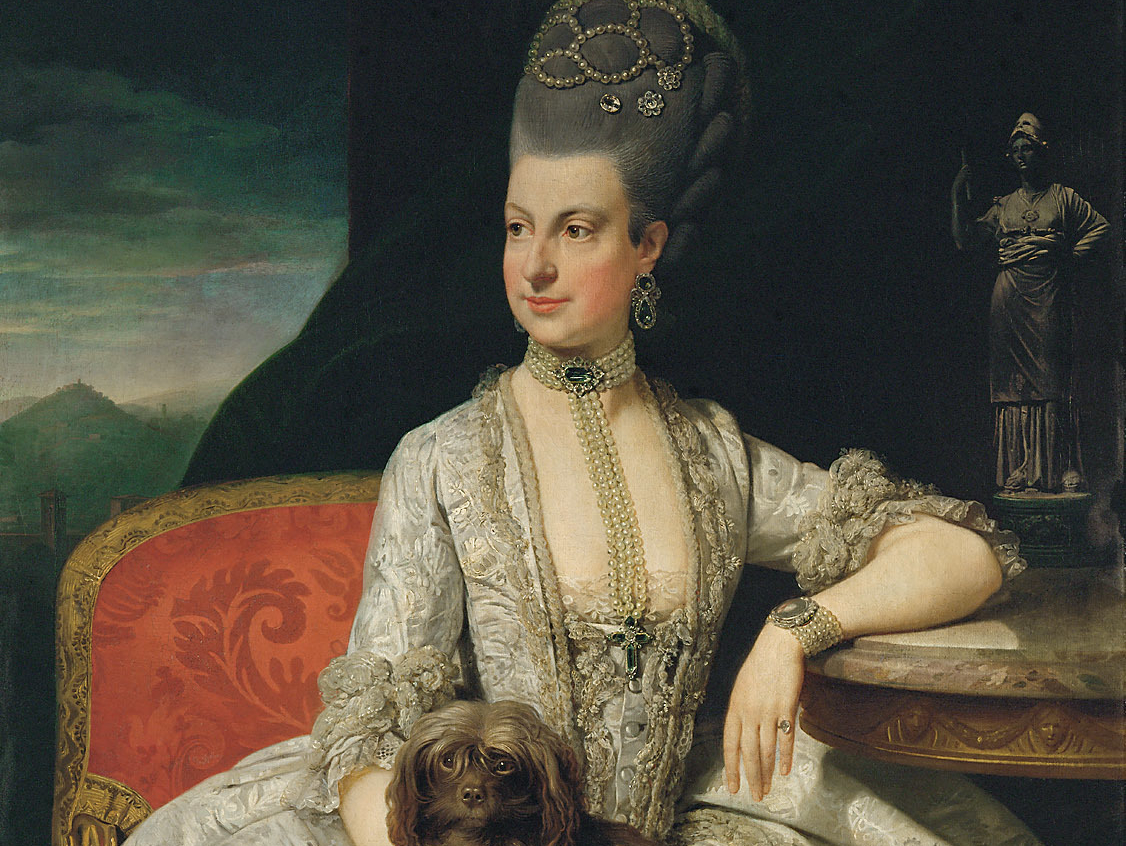 Johann Zoffany, Wikimedia Commons
Johann Zoffany, Wikimedia Commons
31. She Was Barren
A little over a year into their marriage, Maria Christina became pregnant with the couples’ first—and tragically— only child. Their daughter, Maria Christina Theresa only survived one day after birth. To make matters worse, both Maria Christina and Prince Albert fell ill, she with puerperal fever and he with smallpox. When they recovered, it became apparent that they couldn’t have children of their own.
 Unknown Author, Wikimedia Commons
Unknown Author, Wikimedia Commons
32. She Took Her Brother’s Son
Maria Christina was accustomed to getting what she wanted, especially from her family. Following the loss of her own child and the couples’ inability to conceive on their own, she made a bizarre appeal to her brother Leopold.
Surprisingly, she managed to convince him to give her and Prince Albert one of his younger sons, Archduke Charles, to raise as their own.
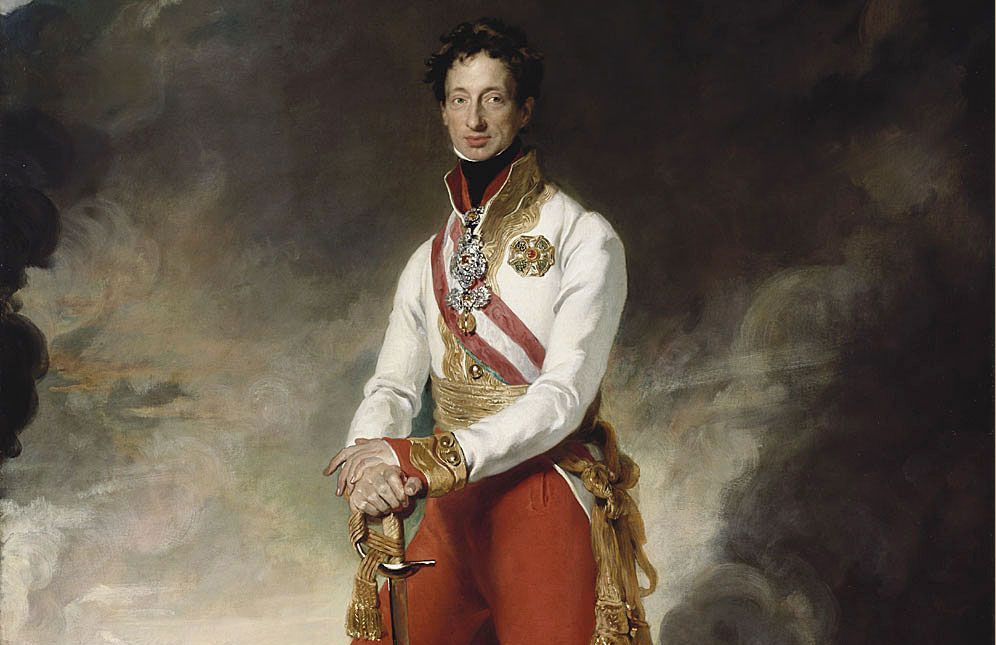 Thomas Lawrence, Wikimedia Commons
Thomas Lawrence, Wikimedia Commons
33. Her Mother Left Her At The Mercy Of Her Siblings
As the favorite child of Europe’s most powerful matriarch, Maris Christina had always enjoyed the finer things in life. Unlike her siblings, she had never had to worry about petty things like politics…or money.
That all shifted when her mother Maria Theresa departed this life in November of 1780. Her siblings were now free to hate her openly.
 Anton von Maron, Wikimedia Commons
Anton von Maron, Wikimedia Commons
34. Her Brother Hated Her Most
Maria Christina’s older brother, Joseph II, ascended to the throne after their mother’s passing. He held more venom for Maria Christina than the rest of her siblings—and the likely reason why was scandalous. It’s possible that he had a little extra hatred for Maria Christina due to the relationship she’d had with his first wife Isabella of Parma.
And, without her mother’s protection against his jealousy, she was about to feel the full, venomous sting of envy.
 Anton von Maron, Wikimedia Commons
Anton von Maron, Wikimedia Commons
35. Her Brother Kicked Her Out
Almost as soon as he ascended to the throne, Joseph II booted Maria Christina and Prince Albert out of Vienna and shipped them off to the Austrian Netherlands. After appointing her governor of a nearly impossible region to govern, he drastically reduced her income and nearly cut her out of their mother’s will. His animosity towards her would cost her everything.
 Chemical Engineer, CC BY-SA 4.0, Wikimedia Commons
Chemical Engineer, CC BY-SA 4.0, Wikimedia Commons
36. Her Brother Set Her Up To Fail
Seeing the tense social situation in the Austrian Netherlands, Maria Christina pleaded with her brother to change his approach to the region. But, even after a visit to Vienna, she was not able to convince him to reverse course. Their simmering sibling rivalry was about to boil over with bloody consequences for the whole family—and all of Europe.
 Martin van Meytens, Wikimedia Commons
Martin van Meytens, Wikimedia Commons
37. She Tried To Play Nice
To her credit, Maria Christina tried to endear herself to her siblings after their mother’s passing. Sadly, it was far too late. When she and Prince Albert visited her sister, Queen Marie Antoinette in Paris, for example, she got the full arctic blast of her sister’s notoriously cold shoulder.
 Élisabeth Louise Vigée Le Brun, Wikimedia Commons
Élisabeth Louise Vigée Le Brun, Wikimedia Commons
38. Her Sister Ignored Her
While staying at the Palace of Versailles, Maria Christina tried to get closer to her sister. She formally requested to see Marie Antoinette’s favorite retreat, the Petit Trianon, where she frequently hung out with her best friends. Marie Antoinette, however, basically told her sister to “eat cake” and ignored the request.
She would live to regret that lack of hospitality.
 Unknown Author, Wikimedia Commons
Unknown Author, Wikimedia Commons
39. She Escaped A Mob
When Maria Christina returned to Brussels, her brother’s reforms had—as she had predicted—resulted in turmoil. The consequences were terrifying. She wrote to her brother how “[people] thronging in thousands” had broken into her palace and forced her to undo her brother’s Imperial decrees before sending her and Prince Albert fleeing across Europe for their lives.
 Joseph Hickel, Wikimedia Commons
Joseph Hickel, Wikimedia Commons
40. She Kept Her Head
Fortunately for Maria Christina, her brother’s tyrannical and vindictive rule came to a sudden end. Joseph II departed from life and Maria Christina's other brother, Leopold II, ascended to the throne. As the two had a much better relationship, he took her advice and rescinded many of Joseph II’s reforms, allowing Maria Christina to return to Brussels—and keep her head.
The same, however, could not be said for her sister, Marie Antoinette.
 Schütz, Carl, Wikimedia Commons
Schütz, Carl, Wikimedia Commons
41. She Was Going To Save Her Sister
In June 1791, Maria Christina prepared to welcome her sister, Marie Antoinette, and her family after the chaos of the French Revolution had turned them into refugees. However, before Marie Antoinette could cross the border into her sister’s safe haven, the revolutionary forces captured her. The turn of events brought their sibling rivalry to a head—excuse the pun.
 Jean-Baptiste André Gautier-Dagoty, Wikimedia Commons
Jean-Baptiste André Gautier-Dagoty, Wikimedia Commons
42. She Could Have Saved Her
In a desperate attempt to save Marie Antoinette’s life, her supporters appealed to Maria Christina to rescue her sister. But they underestimated the depth of the animosity between the two Habsburg girls. Maria Christina was unwilling to send her own personnel into France after her sister, stating she would need her brother's assistance to do so.
In the end, Marie Antoinette lost her head and Maria Christina got her revenge.
 Unknown author, Wikimedia Commons
Unknown author, Wikimedia Commons
43. She Should Buried The Hatchet
As it turns out, Maria Christina might have done well to save her sister. After lopping off Marie Antoinette’s head, the French Revolutionary forces turned their attention toward her. They soundly defeated Austrian forces at the Battle of Jemappes and marched into the Austrian Netherlands. Once again, she found herself fleeing for her life.
She had to hope that her envious siblings would show her the mercy she hadn’t shown Marie Antoinette.
 Henry Scheffer, Wikimedia Commons
Henry Scheffer, Wikimedia Commons
44. She Had No One Left
Following their ultimate expulsion from power, Maria Christina and Prince Albert settled in Dresden for a time. But the years of in-fighting with her family had left them both largely isolated and on the outside of Imperial and royal affairs. No more lavish parties, no more splendid festivals. Just a growing art collection and a lot of regrets.
 Rijksmuseum, CC0, Wikimedia Commons
Rijksmuseum, CC0, Wikimedia Commons
45. Her Health Began To Deteriorate
Eventually, Maria Christina's nephew ascended to the throne and he invited her and Prince Albert back to Vienna. By then, however, her health had taken a turn for the worse and she began experiencing stomach pains. Her deteriorating health condition further drove her into a melancholic state. She knew the end of her story was coming.
 Joseph Kreutzinger, Wikimedia Commons
Joseph Kreutzinger, Wikimedia Commons
46. She Knew The End Was Coming
On the 23rd of June, 1798 Maria Christina's illness worsened. She knew that the end was near. With a heavy heart, she wrote one final love letter. We know what you’re thinking. No, not to Isabella, but to Prince Albert. In the letter she professed her “deep and lifelong love for him”.
The very next day, she drew her final breath—but not all of her letters survived.
 Johann August Walther , Wikimedia Commons
Johann August Walther , Wikimedia Commons
47. Her Love Burned—Literally
Sometime after Isabella of Parma and Maria Christina’s deaths, half the evidence of their scandalous romance was destroyed. Someone burned all the letters that Maria Christina had written to Isabella, so we only have half the story of this 18th century tabloid scandal. With that said, the raciest parts of the letters that do survive paint a very vivid picture…
 Martin van Meytens, Wikimedia Commons
Martin van Meytens, Wikimedia Commons
48. Her Love Letters Were Racy
Some of the wild things that Isabella wrote to Maria Christina were downright risque. Want a sample? Brace yourself, this is pretty racy for 18th century Europe. “I am in the most violent state, sweat runs down my forehead, I am breathless...,” Isabella wrote in one letter. “I kiss thine archangelic little [posterior],” she proclaimed in another. And letters weren’t the only thing that they exchanged.
 Martin van Meytens, Wikimedia Commons
Martin van Meytens, Wikimedia Commons
49. She Flushed Her Love Down The Toilet
Isabella and Maria Christina also frequently gave each other gifts. But nothing as mundane as jewels or flowers. Isabella gave Maria Christina an early version of a toilet—a chair with a hole under which a chamber pot would be placed. But it got even more bizarre.
She lovingly wrote to her saying that she hoped she would think of her every time she used it. Gee, thanks…
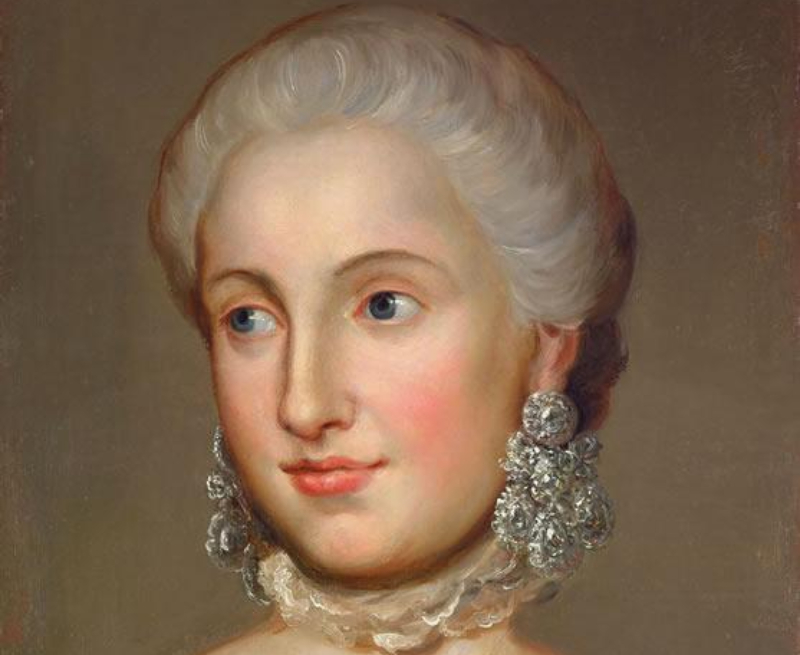 Anton Raphael Mengs, Wikimedia Commons
Anton Raphael Mengs, Wikimedia Commons
50. She Might Have Been Part Of A Secret Society
Prince Albert commissioned a spectacular cenotaph for Maria Christina so that she could lie, in the afterlife, as she had in life—ie, in luxury. Curiously, however, the cenotaph did not contain a single Christian symbol. Instead, the cenotaph’s sculptor, Antonio Canova, carved “several Freemason motifs” into Maria Christina’s final resting place.
 Unknown Author, Wikimedia Commons
Unknown Author, Wikimedia Commons









